The Corsair Hydro X Custom Water Cooling Review, on a Ryzen 9 3950X
by Gavin Bonshor on February 5, 2020 9:00 AM ESTCorsair Hydro X Build Experience
We used the Corsair Hydro X set to best effect in our testing of the ASRock X570 Aqua. To complement the review, we decided to do a full system build featuring ASRock's AMD RX 5700 XT Taichi 8 GB graphics card and other hardware which Corsair provided. Everything bar the motherboard and the AMD Ryzen 3950X processor for this build was provided by Corsair. The full system specifications and test setup are located on the next page, although the full performance of power delivery thermals combined with Corsair's Hydro X parts can be found in our ASRock X570 Aqua review. As the ASRock X570 Aqua comes fitted with its own custom water block which cools the CPU, the power delivery on the motherboard, and the chipset, we didn't use any of Corsair's water blocks for this system.
The Corsair Hydro X Aqua System: All the AMD
Since we aren't using any of Corsair's CPU or GPU blocks for this system, all of the focus is on the core components themselves including the XD5 pump and reservoir combination, a single XR7 240 mm radiator, as well as Corsair's LL120 RGB 120 mm cooling fans and it's Softline range. We did intend to use an additional 360 mm cooling radiator, but the Corsair Crystal 680X with our hardware wasn't compatible due to the ASRock X570 Aqua's larger than normal E-ATX size.
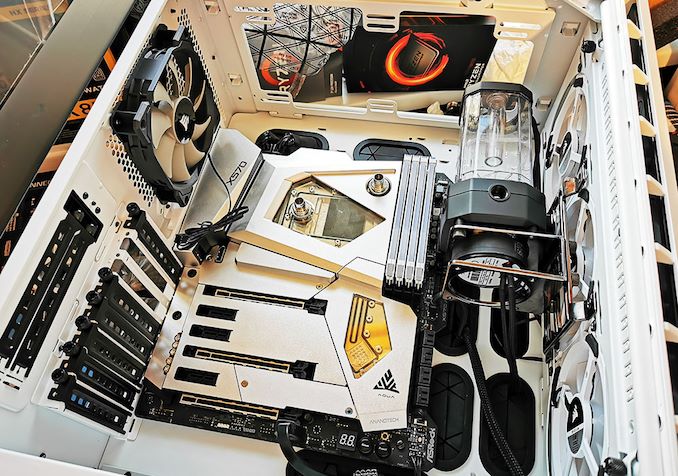
Testing possible hardware configurations inside the Corsair Crystal 680X
The first task before even unboxing the hardware was to work out which way it was going to be configured and routed around the Corsair Crystal 680X chassis. As our motherboard is E-ATX and this is technically for ATX motherboards, we did experience a couple of headaches. This wasn't to the detriment of Corsair, but more our hardware was just too big to fit in. As a result, we decided to go with a single 240 mm radiator to cool the CPU, power delivery, and chipset which the ASRock X570 Aqua block covers.
The Corsair Hydro X Series XD5 comes with mounting brackets to allow installation into various parts of a system. We decided to opt for the safer option and mount it to one of the 120 mm intake fans on the front. This was primarily to allow us to show off the XD5 in the front of the chassis, instead of mounting it in the rear chamber. The XD5 itself looks good with its nylon clear chamber, and the mounting kit is solid and sturdy.
Due to space constraints, we mounted a 240 mm radiator in a pull configuration which intakes air from the bottom of the chassis. We are using three Corsair LL120 RGB 120 mm fans in the front, with two on the radiator, and one in the rear as an exhaust. Each fan is connected to the Corsair Commander Pro controller which allows us to control everything from the Corsair iCUE software.
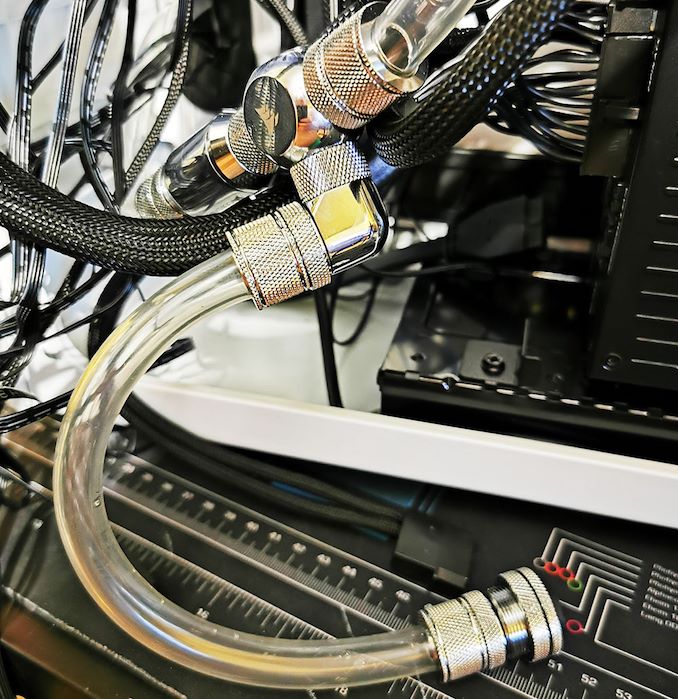
Drain port installation, should the worst happen
For better aesthetics, we routed one of the tubes through the rear chamber of the chassis, but this also allowed us to create less obstruction in the main chamber without needing to run tubing everywhere across components. For easy draining, we connected a ball valve which we can close for draining, and installed a drain port with plenty of tubing to drain without needing to dismantle the loop. This sits in the rear chamber at the bottom and is tucked away in front of the Corsair HX850 850 watt 80PLUS Platinum power supply.
After hours of countless routing and optimization of the tubing and layout, our system was complete. One thing about the Corsair Hydro X series is that it looks good, and is user-friendly making custom loop water cooling more accessible to consumers than ever before. What makes it more accessible is Corsair's Custom Cooling Configurator allows users to put in their hardware into the configurator and allow Corsair to work out what water cooling components are needed for whatever array of components are being used, or plan to be used. The Corsair Cooling Configurator is easy to use, intuitive and looks modern. This is something Corsair has put many months into designing for the end-user to make its buying decisions easy.
With the addition of the Corsair Commander RGB hub, we could connect all of the Corsair Hydro X series components including the fans and XD5 pump and reservoir combo up and sync everything up to the Corsair iCUE software; this includes the Corsair Vengeance Pro RGB memory. At present only ASUS hardware is certified to be used with Corsair iCUE in an exclusive partnership we learned about during CES 2020. As we are using ASRock hardware, we had to sync them up individually, but we like the contrasting look and having the ability to add effects.


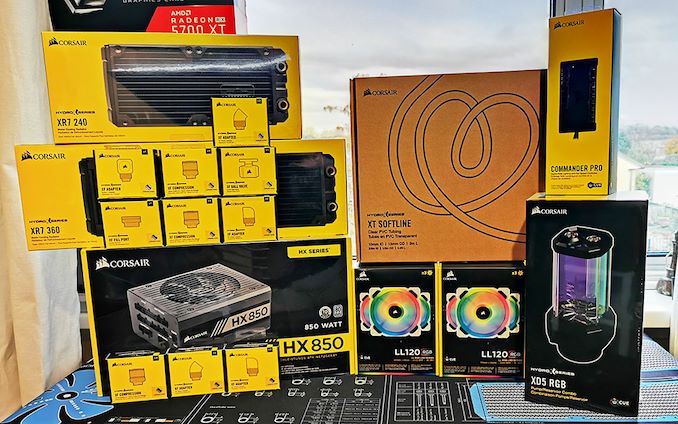

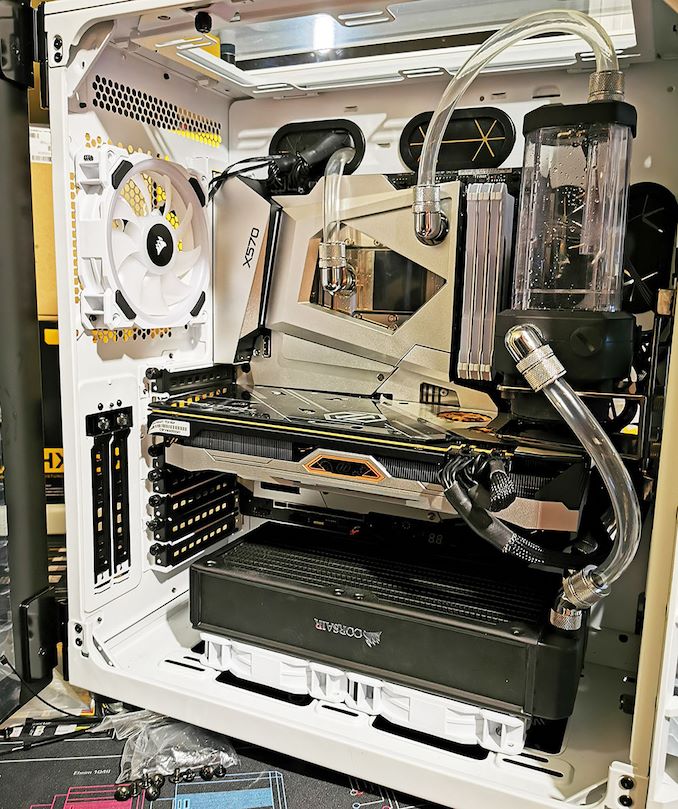
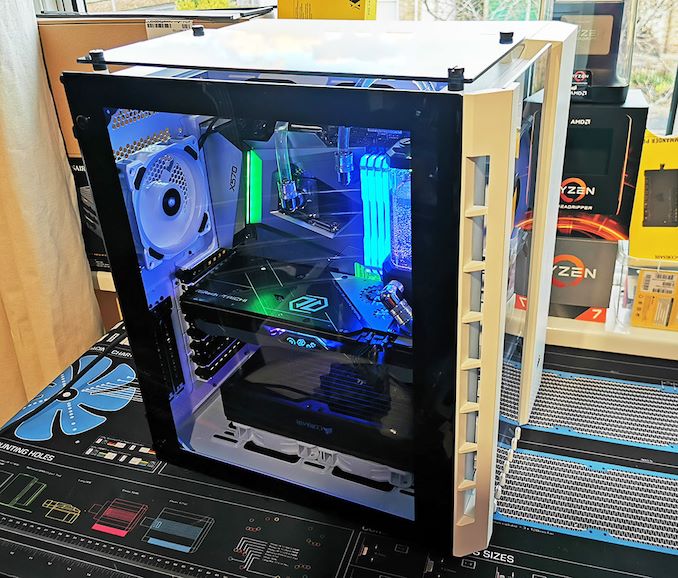
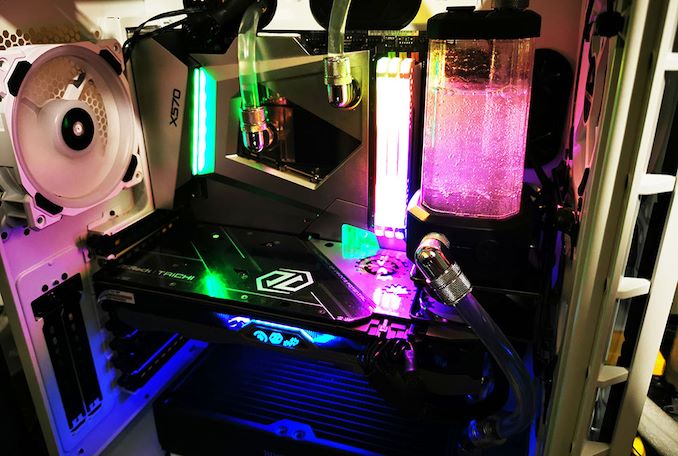








72 Comments
View All Comments
tamalero - Friday, February 7, 2020 - link
You're using the 3,000 RPM ones?Have you tried the 2000 ones?
FatBoyDiesel - Wednesday, February 5, 2020 - link
I got two EK Vardar Ferocity fans instead of Corsair's LL120 or ML120 fans for $43.98. The Corsair fans were $40-$45 each with roughly half (or less) the static pressure. The choice was obvious to me.FatBoyDiesel - Wednesday, February 5, 2020 - link
I meant Furious, not Ferocity. Autocorrect fail.DanNeely - Wednesday, February 5, 2020 - link
I paid $18 each for the 6 Phanteks 140mm x 25mm PH-F140XP-BK fans in my current build 5 years ago. Compared to the $10 each I'd previously paid for a batch of 120mm Yate Loon fans, even that felt steep. $40+ per fan is insane; thankfully unlike most performance parts fans are also used in large numbers by 'boring' system builders so getting models without paying a surcharge for frag harder disco blights should still be possible when I build my next system.From an increase in overall noise I think one of the fans started to go bad a few months ago (and from a reduction in the amount of dust on the corresponding filter I think I know which one); the other 5 are still going strong. The increase in fan noise hasn't gotten high enough for me to confirm my suspicions by selectively disconnecting fans to see if the noise goes down.
12345 - Wednesday, February 5, 2020 - link
These radiators don't require that much static pressure. They're only 16fpi and the fins aren't louvered.eek2121 - Wednesday, February 5, 2020 - link
Corsair charges a lot for their fans, however, they also have some of the best performing fans on the market.sarafino - Thursday, February 6, 2020 - link
Noctua fans easily outperform Corsair's fan lineup.Daveteauk - Sunday, February 9, 2020 - link
You're obviously a Corsair fanboy as that is completely untrue!satai - Wednesday, February 5, 2020 - link
I would like to see a comparison (both performance and noise) to a high end air cooler.brontes - Wednesday, February 5, 2020 - link
Odd that the pics show 240+360 rads and he only uses the 240. General rule of thumb is 240/280 per cooled component.As for noise, I'm running 360x2 "thin" rads (28mm?, hwl gts, corsair's oem) and good fans (a12s, notably not corsair.) Full/artificial load on an oc 3950x and a 1080ti is somewhere between actual silence and a very subtle woosh, depending on how far below spec/stock the component temps are kept. So as far as noise goes, if that's your concern and what you build around, you can safely assume it will be imperceptible/effectively silent 100% of the time, with heavy ocs, with a larger case and 360x3 or 420x2 rads (and expensive fans.)
Air is great for cpus, especially for relatively lower wattage 7nm amd stuff, if you don't mind minor spinup/spindown from brief temp spikes.
But there is absolutely no comparison with putting the gpu under water. You simply can't move 300W of heat quietly even with a fancy axial fan 2.5 slot hsf. I'm not sure that I could ever go back to the obnoxious noise of an air cooled gpu.
A single 280(?!) rad setup, as in this article, is relatively pointless and likely sounds about the same as system on full air. Which is a little disappointing and even a bit unfair in a corsair showcase, as they're rebadging the literal best components in hwl rads and the d5 pump.